Welcome Aboard
ABOARD THE USCGC HEALY, ON THE BEAUFORT SEA– It had been over three years since I last stepped off Healy, and there it was– about a mile offshore, visible from the highway on the way to the airport. The ice between the shore and ship makes docking impractical. The trip to the airport is to catch the shuttle to the ship. The shuttle is a H-65 helicopter, one of the orange helicopters the CG is known for using. All the scientists’ personal gear is carried by helicopter. The heavy science equipment was loaded in Seattle, prior to the transit to Dutch Harbor last week. Shipping heavy equipment to Dutch is relatively expensive, so most loading of heavy equipment takes place at Healy’s home port of Seattle. The ship merely awaits the arrival of the scientists to begin its real mission.
Equipped with a helmet and flight suit, we are given a flight briefing at the airport, focusing mostly on what to do if the helicopter should be forced into the water. Fortunately, the flight suits provide some floatation and cold protection and the trip is not long.
In the helicopter (“hee-lo” as they say) we are led into the back and we strap in to a 5-point harness. We also plug the headphone-equipped helmet into the aircraft’s intercom system. The craft is operated by three “coasties” — the pilot, co-pilot and flight engineer. They all sit up front (and middle), and two of us, myself and co-chief scientist Harper Simmons sit in the back, secured to the aft cockpit wall. From this position it is hard to see much other than the backs of the flight crew or an occasional clump of ice visible through the windows.
Chatter on the radio and a quick glimpse over the heads and shoulders of the flight crew reveal that we have arrived at the ship and been cleared to land. Touching down on the ship’s helipad, the ship is at “Flightcon-1″– no unnecessary personnel are permitted on the flight deck, and no hats are allowed (hats can get caught in helicopter rotors or engines). In addition, a rescue boat sits at the ready with the damage control (fire fighting) party. Fortunately, we don’t don’t require their assistance.
After stepping off the helipad, we are greeted by Dale Chayes from the Lamont-Doherty Earth Observatory (LDEO)… part of Columbia University. He directs arriving scientists into the hangar to be re-united with their luggage. There, we get a peek at the larger moorings that will be deployed later in the cruise.
Dale had invited me on my first trip on Healy in 2005 after I gave a talk at LDEO on Delay Tolerant Networking– my research area that is looking at communication in challenged and remote environments. Dale heads the science support crew that provides technical and computer help for the science party, technical institutional memory, and provides a channel to match terminology between the Coast Guard running the ship and the scientists running their instruments. The last time he was in San Francisco, together we met with Turing award winner Jim Gray to discuss how large data sets are handled. Sadly, Jim still remains lost at sea, having disappeared in his sailboat off the coast of California near San Francisco.
In the hangar, we doff the flight suits so they can be given to the next set of helo passengers. I pick up my pager and information card and drop off my things in my stateroom. Everyone wears a pager on ship, as it’s nearly impossible to find anyone otherwise. The information card gives the number of the life raft you need to report to in case there is a reason to abandon ship. I arrived just in time for lunch, but about a third of the science party didn’t… they were delayed due to fog. Barrow is one of the foggiest cities in the country, and it’s not unusual to have flights (helicopter or otherwise) cancelled or delayed. If you intend to travel here, give yourself a day or two slack on either side.
Exploring the ship alone, I remember it is easy to get lost and that its time to switch to at least a semblance of nautical jargon. The “house” includes places to cook, eat, sleep, have meetings and drive the ship. Forward of the house, the fo’c’stle is the front deck of the ship, and is also nice place to use for photography, as we’ll see later. Aft of the house is the engine and lab spaces, the hangar and helipad, and the aft control room (“Aft Con”). Next to the science lab spaces is the aft outdoor workspace, containing winches and cranes to deploy and recover gear. On the starboard side is another, smaller winch system. Above it all is the “Aloft Con,” essentially the crow’s nest of Healy. Port is, of course, the left side of the ship and starboard is the right. The term starboard derives from the words “steer board”– years ago its was common to mount your boat’s steering board (modern equivalent of a rudder) on the right-hand side.
After the fog lifted, aviation operations continued once again. Repeated ringing of the ship’s bells indicated the arrival of our VIPs (known as ‘Distinguished Visitors’ or DVs). Our DVs included Michael Chertoff, the Secretary of Homeland Security, and the Commandant of the Coast Guard, Admiral Thad Allen. They were met by the commanding officer of Healy, Captain Frederick Sommer. I was also in the hangar when they arrived, and Admiral Allen said hello and shook my hand. A solid handshake… not surprising, as he is a solid-looking fellow. They would speak to the ship and its crew later in the evening.
While the captain was sequestered with the DVs in the wardroom, the flight deck was converted back for its normal deck use. The science party wasted little time during all of this. One of the first operations is to get a sample of water and ensure the instruments read true. This is accomplished using the starboard winch to cast a rosette into the water. The rosette has a (variable, usually 12 or 24) number of water sampling bottles attached to it. They are left open until the rosette reaches a certain depth (or set of depths). At specific points, an activator controlled by a terminal in Aft Con causes the bottles to close using the snap-action of attached springs. The commands given to the rosette are frequency shift keyed (FSK) signals that travel along the same cable that lowers and raises the rosette.
In addition to the bottles, the rosette has an instrument package attached to it at the bottom. The package includes a CTD, and several other instruments. The CTD measures conductivity, temperature, and depth. It is one of the most common oceanographic instruments used, and there are many models available. In this particular case, the data retrieved from the CTD can be compared against similar measurements made on-ship of the sampled water to ensure the CTD is operating correctly. CTD “casting” takes place regularly as the cruise progresses. Data from this CTD, as well as many other instruments permanently mounted in the ship, is made available to scientists over the ship’s local area (science) network. More details on the network later.
In the evening, the DVs addressed the crew (and the rest of us who wished to attend). They handed out various awards and promotions to the crew. Secretary Chertoff discussed the importance of the arctic to both science and the national interests of the United States, and Admiral Allen underscored some of the secretary’s comments, highlighting the deployment of the CG’s new “National Security Cutter,” Bertholf. There are plans to place three more of these cutters into service in the next several years. The Commandant went on to discuss some of the crew’s concerns regarding days between port calls, career advancement and other issues, such as a revised uniform for CG personnel.
Next up is the “in-brief,” where new arrivals learn about basic procedures on the ship. Much of it is also covered in the “Welcome Aboard” document allegedly present in everybody’s cabin. For those having never had the experience, it is during the inbrief where a new arrival experiences the donning of an arctic water survival suit more affectionately known as a “gumby suit,” given the way one appears when wearing it. These are not easy to get in to or remove, nor easy to maneuver in when on. However, they are supposedly effective in keeping you alive for at least a few tens of minutes should you fall into the icy water of the arctic. Attached one finds a mirror and whistle– used to signal for help.
A typical day aboard Healy starts at about 0700, when breakfast is served. For most of the crew, the day ends about 1800. After dinner movies and other entertainment may be available. For the science party, however, hours can be extremely long. Working until 0300 or 0400 is not terribly unusual, and all-night sessions are not unheard of. Of course, being light effectively all day can encourage one to work longer than they might otherwise. It’s something to avoid if you intend to stay alert and safe.
Winding up the first day on Healy, I recall from my last time here that the fo’c’stle affords a nice view of the sea (and ice, if present), and is a nice spot for taking pictures. Phil and I proceed forward and begin some photography and videography. We run into Holly and Kjetil, both from the MIT/WHOI joint graduate program, who have also discovered the views.
There is also some nice ice with blue pools floating by. Although pools are fairly common, this piece has a larger than average number. Shortly after, we spot a baby seal on the ice– the first noteworthy wildlife we have seen since coming aboard. It is a bit far off, so the photo is not a close-up. The seal appears to be seeking its mother; we expect her to not be far off, but never see her.
As the arctic “summer sunset” draws near, I think of how difficult a life it must be in the arctic, but how beautiful, important, and unique it is.


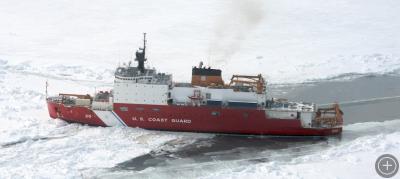
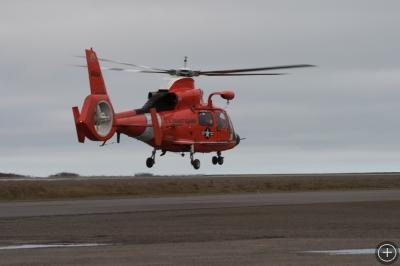


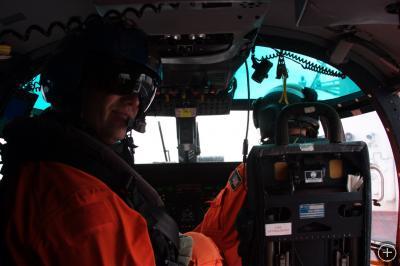
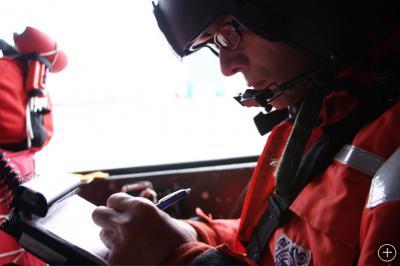
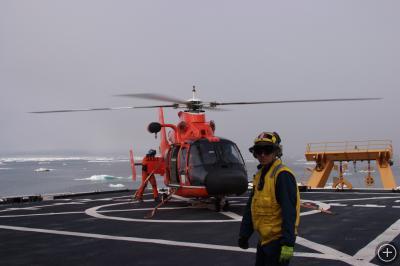
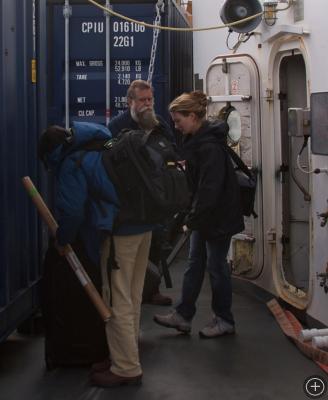
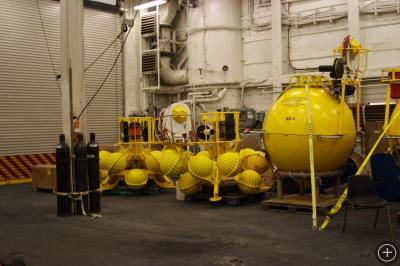

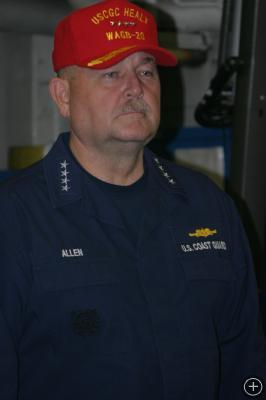
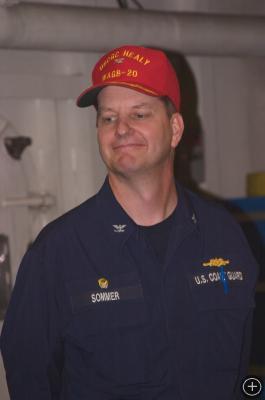

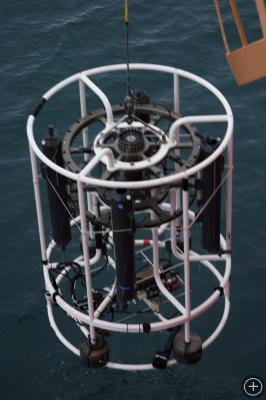
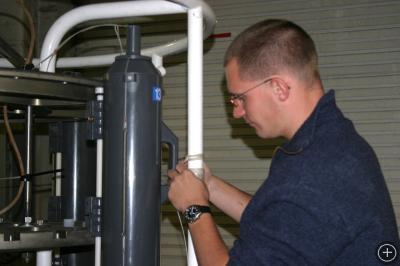

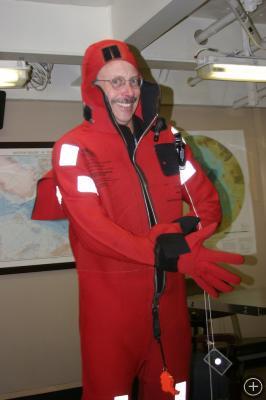
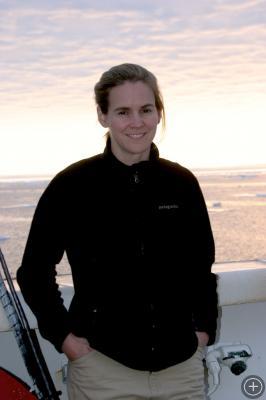
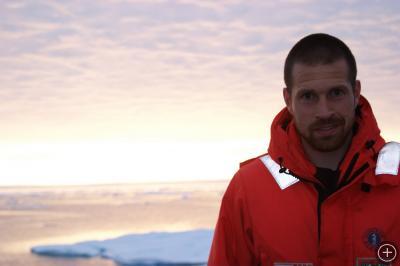
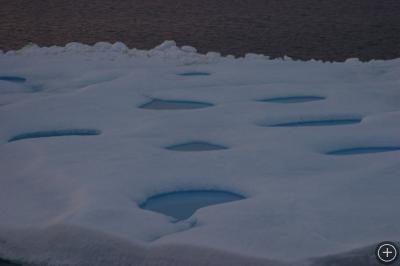
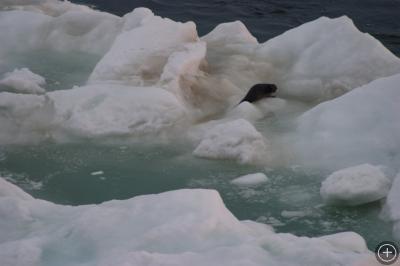
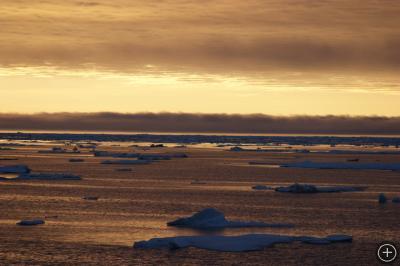



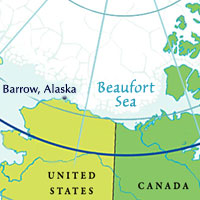





You should post the photos of Matthew Alford in his shorts on the ice formation!
Impressive, 3 years on board the Healy. I read that Healy was already held in high regard as a seaman and navigator in the waters of Alaska, it was as Commanding Officer of BEAR that Healy made his mark. During the last two decades, Captain Healy was the United States Government in most of Alaska. In his twenty years of service between San Francisco and Point Barrow, he acted as judge, doctor, and policemen to Alaskan natives, merchant seamen and whaling crews.